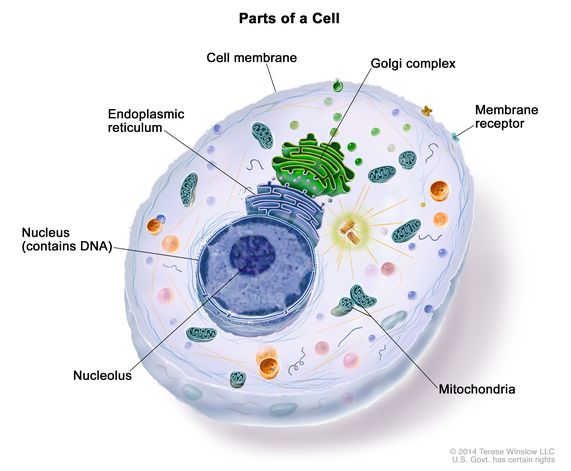cell
(sel)
In biology, the smallest unit that can live on its own and that makes up all living organisms and the tissues of the body. A cell has three main parts: the cell membrane, the nucleus, and the cytoplasm. The cell membrane surrounds the cell and controls the substances that go into and out of the cell. The nucleus is a structure inside the cell that contains the nucleolus and most of the cell’s DNA. It is also where most RNA is made. The cytoplasm is the fluid inside the cell. It contains other tiny cell parts that have specific functions, including the Golgi complex, the mitochondria, and the endoplasmic reticulum. The cytoplasm is where most chemical reactions take place and where most proteins are made. The human body has more than 30 trillion cells.
